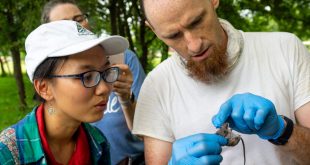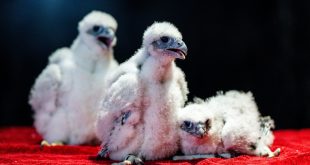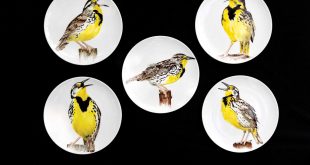Nebraska’s diverse milkweed species are keystones to the health of ecosystems and the animals that rely on them.
Enlarge
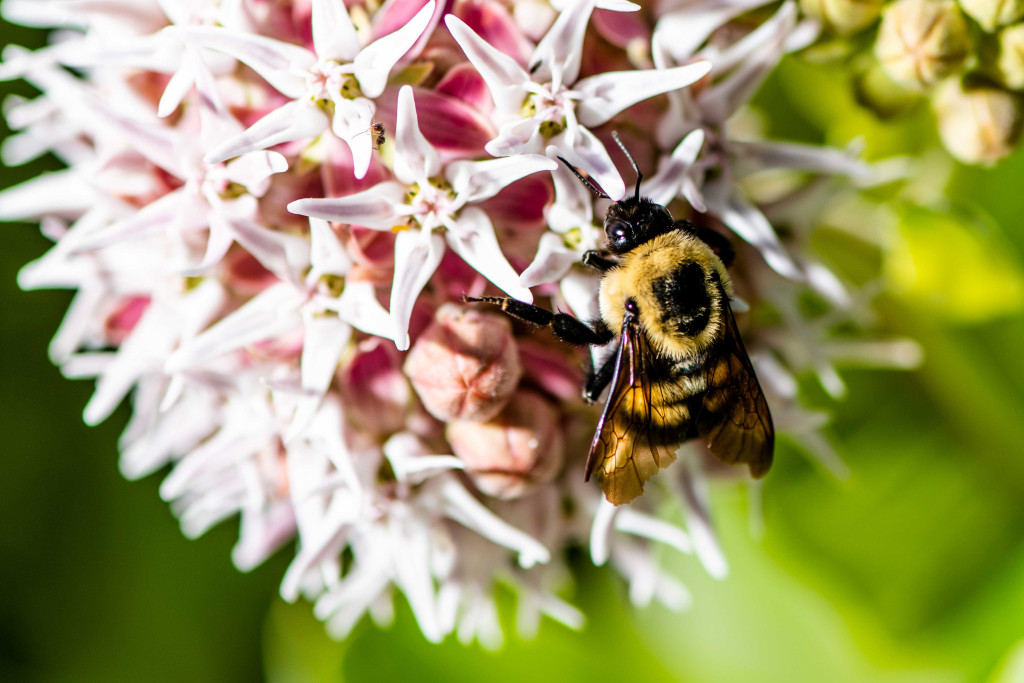
Photo by Justin Haag, Nebraskaland Magazine
By Monica Macoubrie, Wildlife Education Specialist
Milkweed plants are indispensable keystones in ecosystems across Nebraska. These resilient and diverse species not only grace the prairies with their striking blooms, but they also serve as vital habitats and food sources for a variety of pollinators and other wildlife. From monarch butterflies that rely on milkweed as their sole host plant to bees and other insects seeking nectar and pollen, these plants support a delicate ecological niche.
What Are Milkweeds?
Milkweeds are North American perennial flowering plants that belong to the Asclepiadaceae family. They are recognizable by their tall, erect stems and clusters of small, fragrant flowers that bloom in shades of pink, orange or white. The plant gets its name from the milky latex sap it exudes when leaves or stems are damaged. Generally considered toxic, the presence of cardiac glycosides in the plants’ sap, leaves and stems can be harmful or fatal to many animals if ingested in large quantities.
The Role of Milkweed
Host Plant for Monarch Butterflies – Milkweed species, especially common milkweed, serve as essential host plants for monarch butterfly larvae. Monarchs lay their eggs exclusively on milkweed plants, and the young caterpillars feed on the leaves, acquiring the toxins that render them unpalatable to predators. This relationship is critical to the survival of monarch populations.
Support for Pollinators – Milkweed flowers are rich in nectar and attract a wide range of pollinators, including bees, butterflies, moths and even hummingbirds. They play a vital role in supporting pollinator populations and enhancing biodiversity in natural habitats and gardens.
Food Source for Wildlife – Various insects feed on milkweed plants, including beetles, bugs and caterpillars. These insects, in turn, serve as food for numerous birds, reptiles and other wildlife, contributing to the overall food web.
Soil Stabilization and Erosion Control – Milkweed species, with their extensive root systems, help stabilize soil and prevent erosion, particularly in disturbed areas such as roadsides and fields.
Medicinal and Cultural Uses – Historically, milkweed has been used for medicinal purposes by indigenous cultures. Different parts of the plant have been used to treat various ailments. Additionally, milkweed can be a source of fibers for making ropes and textiles.
Indicator of Habitat Quality – The presence of milkweed plants can indicate the health and quality of natural habitats. Their decline in certain regions may signify environmental changes or habitat degradation.
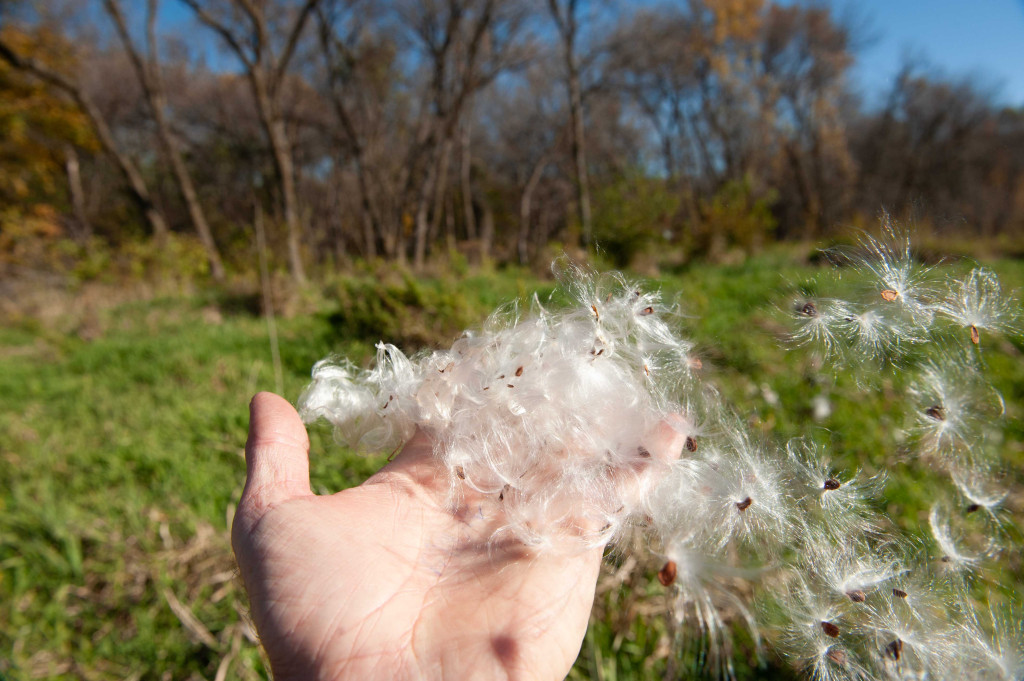
Nebraska Milkweed Species
Common Milkweed (Asclepias syriaca)
Common milkweed is widespread across Nebraska, making it one of the most familiar native perennial plants in the region. Recognizable for its broad, oval leaves and clusters of fragrant, pinkish-purple flowers, this species can grow up to 8 feet tall, typically reaching heights of 3-5 feet. It thrives in diverse habitats including fields, roadsides, prairies and disturbed areas, blooming from June through August. Common milkweed is classified as shade-intolerant, requiring ample sunlight and moist soils to flourish.
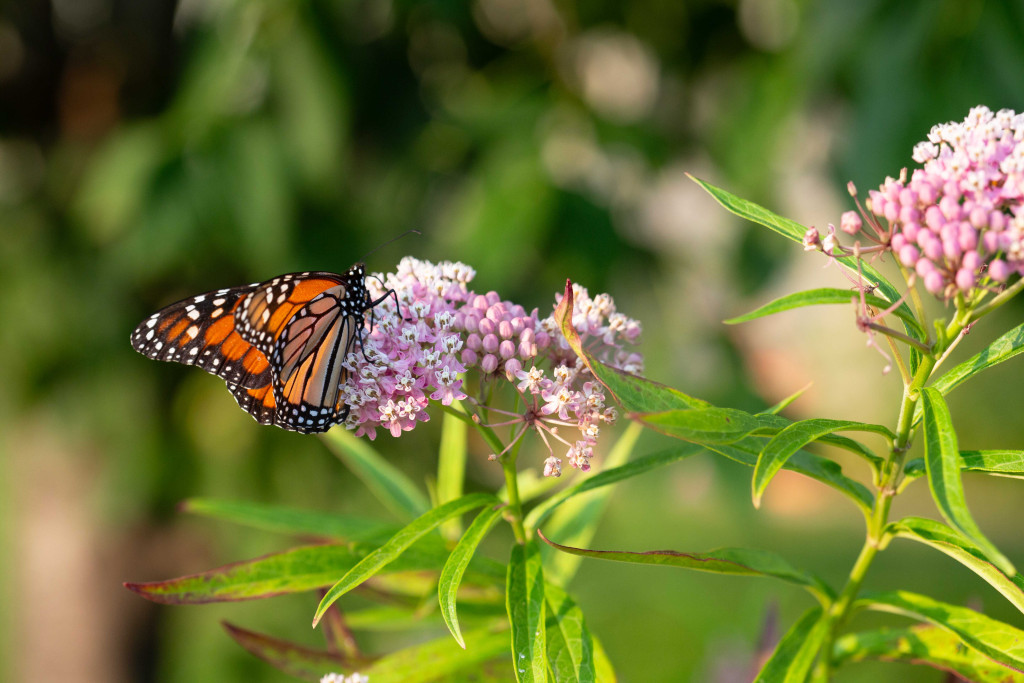
Reproduction
Common milkweed propagates easily through both seeds and rhizome cuttings, with blooms typically appearing in the second year, occasionally in the first for cuttings. Nurseries commonly offer seeds and plants for cultivation. The fruits, or pods, measure approximately 4 inches in length and are inflated with small, finger-like projections covering their surface. Initially green, they mature to a brown color. Upon ripening, these pods split open, releasing 50-100 seeds, each adorned with a white, fluffy coma that aids in wind dispersal.
Use
Despite its natural toxicity, common milkweed supports a variety of insect species — over 450 insects are known to feed on some portion of the plant. Butterflies, moths, bees, wasps and others visit for pollen and nectar. Furthermore, studies have identified over two dozen insect species that aid in pollinating common milkweed, including honey bees, bumble bees, large wasps and larger butterflies as key pollinators. Some insects consume milkweed leaves or seeds, such as milkweed beetles, large milkweed bugs and tussock moths. Predators like crab spiders and mantises capitalize on the diversity of prey found on milkweeds, underscoring the complex web of interactions within the milkweed ecosystem.
Butterfly Milkweed (Asclepias tuberosa)
Butterfly milkweed, also known as orange milkweed, stands out distinctively from common milkweed with its vivid orange or reddish-orange flowers. This plant usually reaches 1-2 feet in height and spreads in clumps. Each cluster contains numerous small flowers, creating a dense, rounded umbel. Butterfly milkweed blooms May through September.
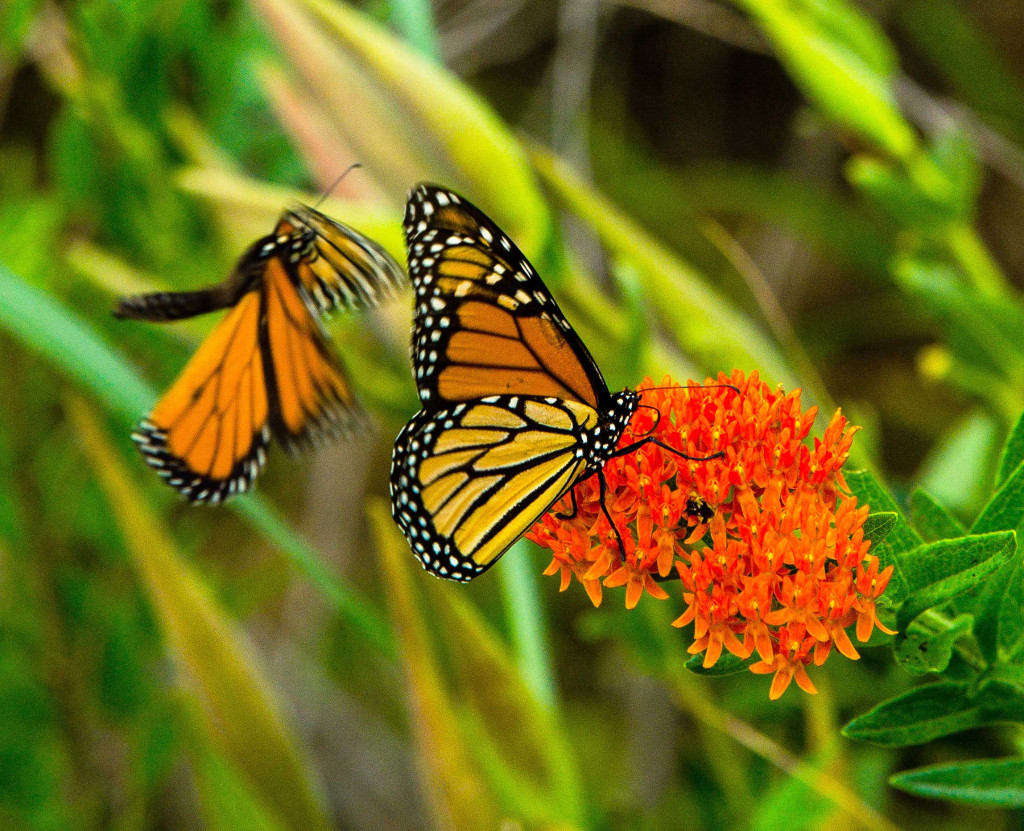
Reproduction
Butterfly milkweed can be propagated successfully using both seeds and rhizome cuttings. Typically, both seedlings and cuttings will start blooming in their second year, although cuttings may occasionally bloom in their first year. Selected cultivars of butterfly milkweed are readily available from numerous nurseries. The plant spreads through underground shoots and has the potential to become invasive in certain environments.
Use
While monarch caterpillars may not utilize butterfly milkweed as frequently as other milkweed species, it is highly attractive to a variety of butterflies, bees and other pollinators.
Swamp Milkweed (Asclepias incarnata)
Known as the pink milkweed, this plant is uniquely adapted to water-loving habitats. Swamp milkweed flourishes in wetter environments like marshes, riverbanks and wet meadows, as its name suggests. It displays clusters of fragrant pink to mauve flowers and narrow, lance-shaped leaves, occasionally featuring snow-white flowers instead of pink. Swamp milkweed plays a critical role in wetland restoration efforts by tolerating and stabilizing moist soils. This species typically blooms June through October, adding vibrant color to its aquatic surroundings.
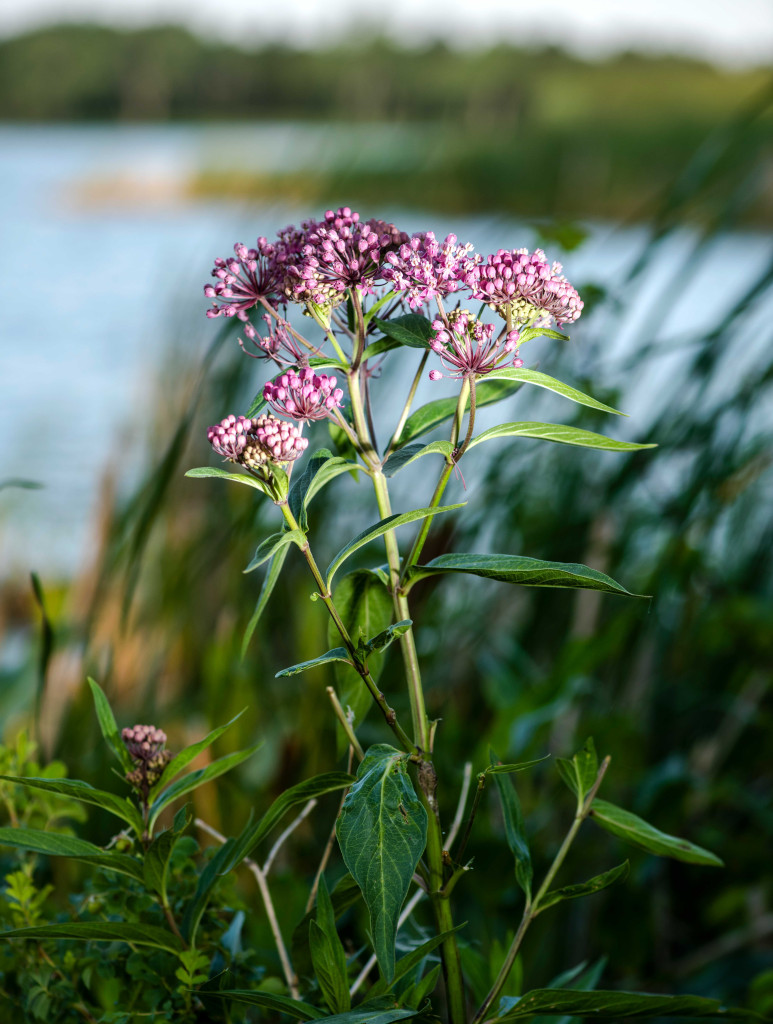
Reproduction
Swamp milkweed reproduces primarily through seeds, which are dispersed by wind when the mature pods split open. Each pod contains numerous seeds, each equipped with a fluffy, white coma that aids in wind dispersal. This mechanism allows swamp milkweed to spread its seeds over a wide area, facilitating its colonization of suitable wetland habitats.
Additionally, swamp milkweed can propagate through rhizomes. Rhizomes are underground stems that grow horizontally, giving rise to new shoots and plants. This method of reproduction allows swamp milkweed to form dense colonies and expand its presence within wetland environments.
Use
Swamp milkweed interacts with a diverse array of species, such as monarch, swallowtails, fritillaries and skipper butterflies; bees; wasps; beetles; moths; hummingbirds; crab spiders and mantises. Its importance as a nectar source in wetland ecosystems supports both pollinators and herbivores.
Whorled Milkweed (Asclepias verticillata)
Whorled milkweed is named for its distinctive whorls of narrow, linear leaves that grow in circles or clusters along the stem, giving the plant a unique appearance. The stems of whorled milkweed are slender and upright, reaching heights of 1 to 2 feet. In summer, whorled milkweed blooms with small, fragrant white to pale-pink flowers arranged in compact clusters called umbels at the top of the stems. Each flower has five petals that curl backward, exposing the central crown of the flower where nectar is stored.
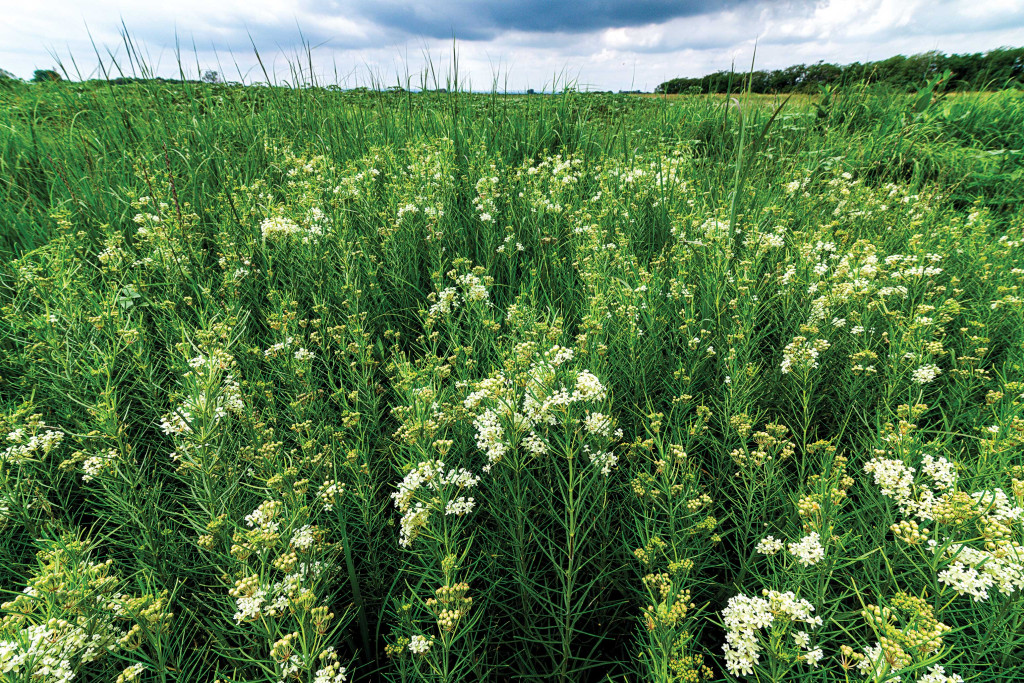
Reproduction
After flowering, whorled milkweed develops slender seed pods that are about 3 to 6 inches long. These pods split open when mature, releasing numerous seeds with tufts of silky hairs that aid in wind dispersal.
Use
As one of the latest milkweeds to fade as the season progresses, this species often becomes a preferred host plant for monarch larvae in the late season. Additionally, it provides essential food sources for numerous native bee species.
Showy Milkweed (Asclepias speciosa)
In summer, showy milkweed produces dense, rounded clusters of pale pink to purplish-pink flowers that are highly fragrant. Each umbel consists of numerous individual flowers with five reflexed petals and a central crown of hooded structures containing nectar. Growing up to 3 to 4 feet tall, it features erect stems with broad, lance-shaped leaves arranged spirally along the stem. The leaves are smooth and can reach lengths of 6 to 10 inches. The plant is adapted to various habitats, including meadows, prairies and open woodlands, thriving in well-drained soils under full sun to partial shade.
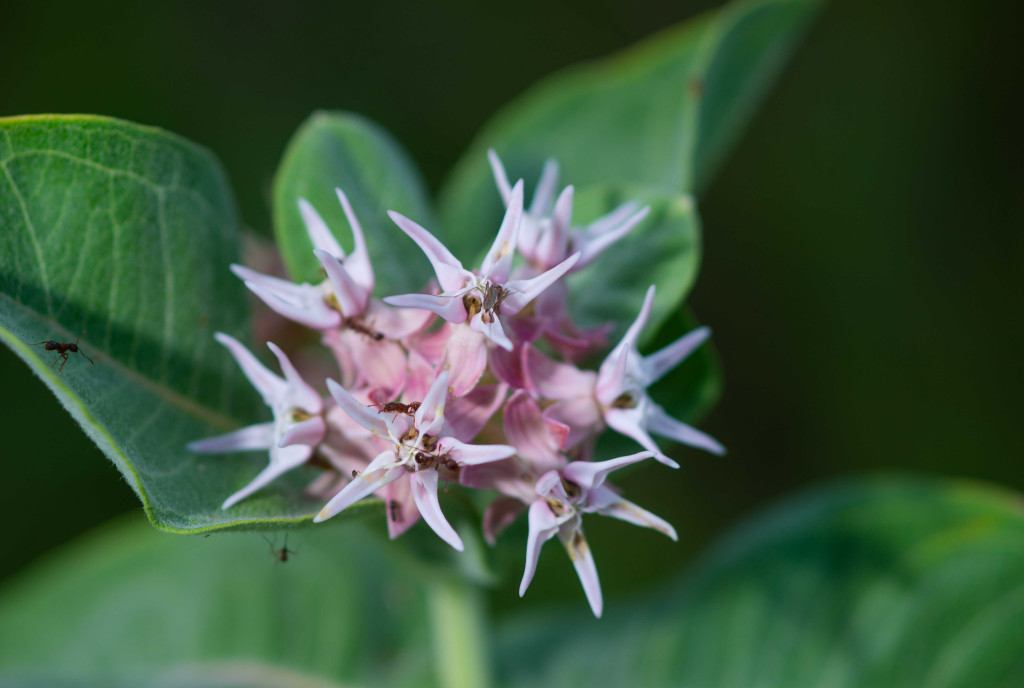
Reproduction
After flowering, showy milkweed forms distinctive seed pods that are 3 to 5 inches long and smooth. These pods contain numerous seeds attached to silky, white hairs that enable wind dispersal.
Use
Like other milkweed species, showy milkweed attracts monarch butterflies as a host plant for their eggs. Additionally, species like viceroy butterflies also utilize this plant. Beetles such as red milkweed beetles and large milkweed bugs are commonly observed on showy milkweed, while other insects such as lady beetles, pirate bugs, hoverflies and parasitic wasps also can be found there. Showy milkweed is occasionally visited by hummingbirds. It is among the less toxic milkweeds, and certain parts of the plant can be prepared as a vegetable for human consumption.
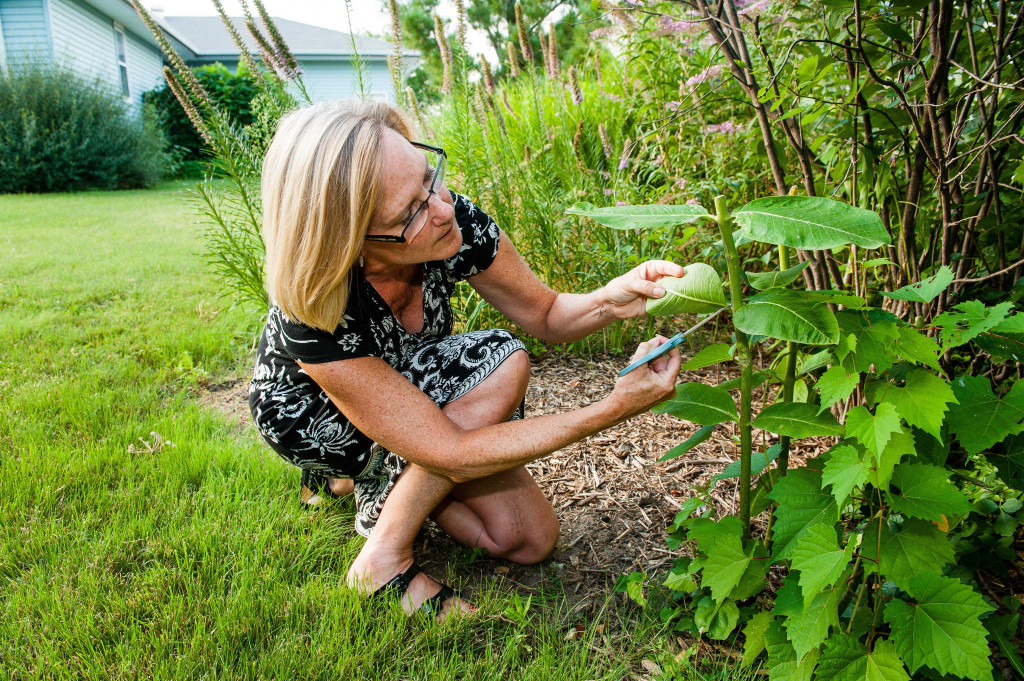
Conservation Efforts
Habitat loss and pesticide use have significantly reduced milkweed populations, threatening the species that depend on them. Initiatives to restore native milkweed habitats, such as planting milkweed in gardens and participating in conservation programs, are essential to maintaining healthy ecosystems and supporting the abundance of creatures that rely on them.
 Nebraskaland Magazine
Nebraskaland Magazine
